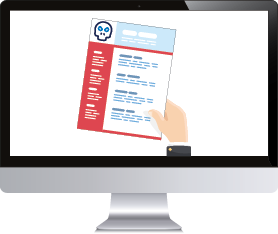
Automated software bot fraud
Automated software programs, known as bots, are a growing problem in financial fraud. Like malware, bots can be easily uploaded onto mobile devices and used to automate malicious tasks at speeds and volumes unattainable for a human. Now bots are being developed to take on behaviors and mask their identity, making it more difficult to identify fraud versus genuine activity.

Problem overview
Bot financial fraud poses significant risks to both individuals and organizations, including financial loss, damage to reputation, and potential legal complications. Preventing it requires strong fraud protection capabilities that go beyond credential, device, and network analysis. There are distinct differences in the actions of a bot versus a person.
Whether you need to stop bots from accessing existing customer accounts or protect customer credit and funds from being extended to cybercriminals using another’s identity, BioCatch can quickly identify the actions and behaviors of a bot before monies leave your institution.
Credential stuffing
This is a type of fraud use case where bots use stolen account credentials to gain unauthorized access to user accounts. The objective is to commit identity theft or fraudulent financial transactions.
Application fraud
Bots can be used to automate the submission of loan or credit card applications using stolen or synthetic identities. If successful, the fraudster can gain access to a large number of approved applications and access to money.

Account access fraud
Fraudsters will take account name and password information and use bots to enter these credentials into thousands of bank accounts until it finds the victims' accounts.

Account application fraud
Using bots to upload victim information quickly on application sites allows fraudsters to gain access to multiple lines of credit before financial institutions or the victims realize that the new account is fraudulent.

Tiny technology.
Large appetite for financial harm.
The goal of malicious bots is to disrupt your business for their financial gain. While their intent is malicious, the content contained is benign, making attacks difficult to detect and defend.
During this session, you will hear from a member of the BioCatch Threat Analytics team provide a comprehensive overview of the history of bot attacks, their evolution over time, and the key behaviors that can be used to detect them today.



use case
Identity theft fraud
Identity theft causes significant financial losses and damages customer trust. The rise in digital transactions amplifies these risks significantly. Prioritizing fraud protection measures, including behavioral biometric intelligence, is paramount to protecting customer assets and confidence while maintaining the organization's reputation.




%20(1).png)
